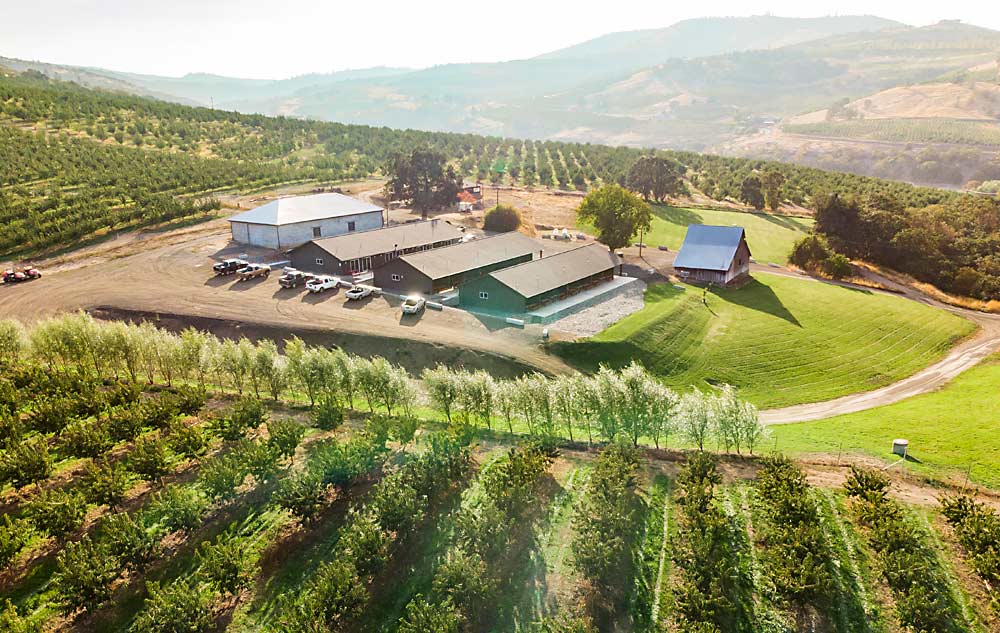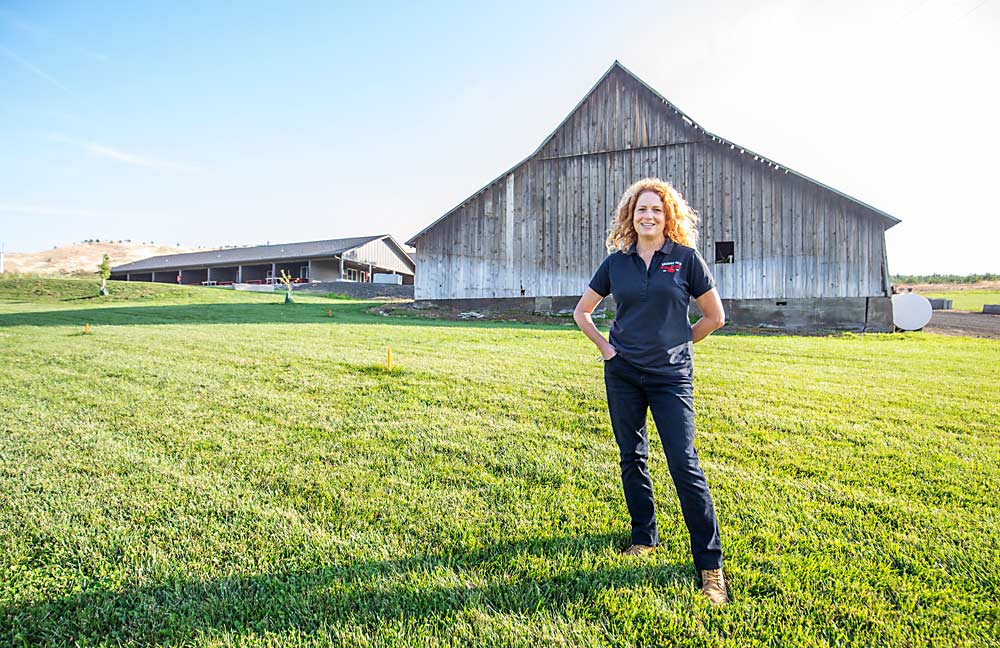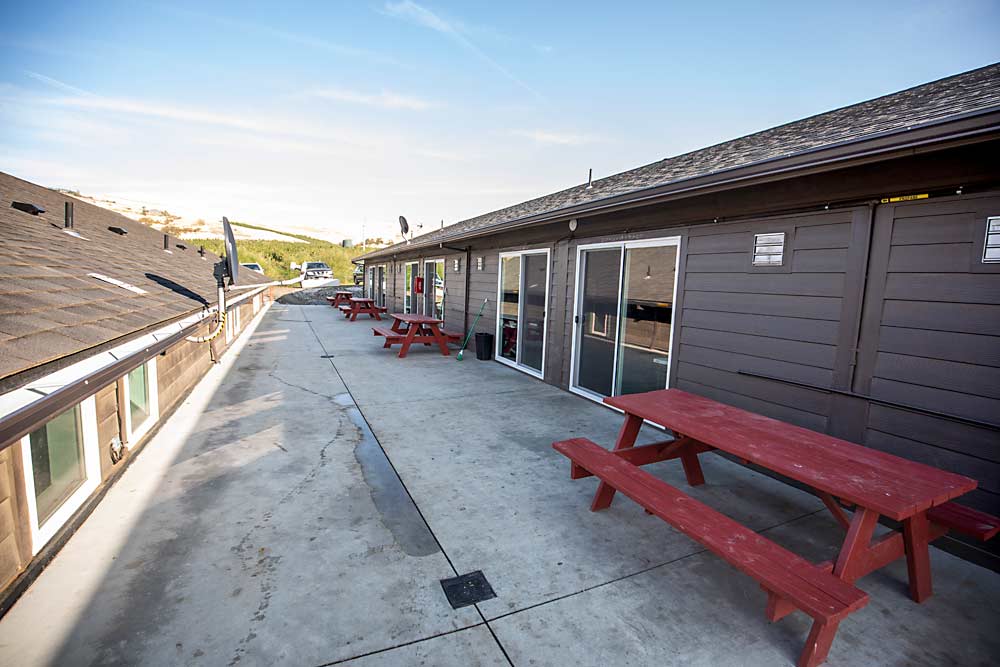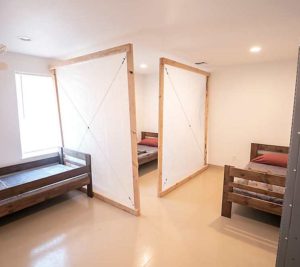
In the spring, as Brenda Thomas prepared to house visiting cherry pickers during the coronavirus pandemic, she made up her mind to keep an optimistic attitude and expect imperfection. She conveyed the same message to everyone in her company, Orchard View Inc. in The Dalles, Oregon.
“We decided we would do whatever it takes to continue with harvest,” said Thomas, company president. “And we were not going to be surprised if we had a positive.”
They did harvest all their fruit, and they did have a few positive tests among their employees. But as it did for most of Oregon’s tree fruit industry, the season came and went with manageable labor disruptions, a full harvest and no housing-related outbreaks — a success story emerging from a challenging year, thanks to careful planning, good communication and a little luck.
Oregon entered the season with some of the most restrictive on-farm housing regulations in the nation, after Gov. Kate Brown banned the use of bunk beds for anyone not related. Growers scrambled to rearrange their facilities, locate additional housing and hire sanitizing crews, while the state set aside funds to help pay for the measures.
The good news: Oregon had no outbreaks tied to on-farm housing, as far as state agencies and growers’ groups could tell. The Oregon Occupational Safety and Health Administration conducted 13 inspections that resulted in citations related to temporary coronavirus regulations. Most dealt with field sanitation, such as extra portable toilets and handwashing facilities. None were related to housing.
Meanwhile, the housing capacity challenge played out better than expected. The Oregon Department of Agriculture, growers and labor advocates had modeled losses of up to 40 percent of beds, but many migrant laborers showed up as families who could use bunk beds. Growers and health officials found other ways to backfill, such as rearranging single beds, erecting plastic barriers, renting trailer homes and booking hotels.
In June, the state set aside $15 million of federal aid to reimburse farmers for improvements related to the coronavirus, such as setting up extra portable toilets and retrofitting housing. The housing reimbursements were capped at $20,000 and only applied to temporary solutions. Permanent renovations were not eligible.
In mid-November, about $500,000 had been claimed, though the agency was still collecting receipts.

Teamwork
Most of the people involved credit teamwork for Oregon’s success. State agencies, university extension specialists, growers, health authorities and community groups all maintained regular communication, often until late at night. The governor used the Oregon National Guard to distribute KN95 masks, while health experts held free on-farm training in social distancing and hygiene.
“From my seat, the biggest takeaway was the collaboration and engagement that we all had with each other,” said Jonathan Sandau, special assistant to the agriculture director.
Mike Doke, executive director of the Columbia Gorge Fruit Growers, agreed. He recalled getting phone calls from state authorities well into the evening, just to check up on things.
The Columbia Gorge Fruit Growers and other groups, such as the Oregon Farm Bureau, did not favor the bunk bed restrictions and would have preferred a model like Washington’s, allowing for groups of up to 15 workers who lived, traveled and worked together, related or not.
Still, Doke conceded that the ban did not cause irreparable harm to labor. “I keep asking about labor, and labor hasn’t been a big issue,” Doke said.
Samantha Bayer, policy counsel for Oregon Farm Bureau, said it was more difficult to complete harvest, and growers did indeed see a reduction in workforce.
“It achieved its goal of not spreading COVID-19, but it caused harm,” Bayer said.
Bayer also suspects some of the displaced workers turned to short-term community housing that did not have the same strict distance and sanitation rules, at greater expense.
The Farm Bureau did not dispute the need for rules but would have preferred an administrative process to craft them instead of an executive order, which threatened a Class C criminal misdemeanor for those who did not comply. In October, Brown issued a new executive order extending the housing rules through April 30 next year.

“I feel very fortunate”
When it comes to cherries, most migrant workers visit The Dalles from California.
Orchard View, one of the area’s largest cherry producers, has about 1,400 employees during its peak harvest season but only 30 or so H-2A workers. The bunk bed restriction curtailed Orchard View’s capacity by a few hundred beds, but an average-sized crop — not a large one — bailed them out, Thomas said.
A total of 14 COVID-19 cases were traced to employees or members of their households, but none of them lived on the farm, she said. They all isolated in their homes in the community and recovered.
“I feel very fortunate,” she said.
The fact that cherry season affords so few days off also helped, she said. Nobody had time to go anywhere except work and home, and her workers wanted to stay healthy so they could continue working.
All told, she spent about $1 million on coronavirus-related expenses. She hired a nearby health clinic early in the season to onboard her workers with temperature checks and guidance. Then, she appointed compliance officers in the fields and in housing, also one of the governor’s mandates.
About 30 miles west of The Dalles, the Hood River pear industry relies more heavily on H-2A workers, though growers there also reported few labor shortages.
Erin Roby, business manager for two small family farms, administrates a collaborative H-2A program for 33 Diamond Fruit growers, with nine housing locations throughout the Hood River Valley. This year, the growers shared 131 Mexican H-2A employees who worked their way uphill from the banks of the Columbia River to the eaves of Mount Hood as the harvest season progressed from August through early October. Not one of them tested positive, Roby said.
The bunk bed restriction cut about 20 percent of her housing capacity, but the area’s pear crop was smaller and less compressed than last year, giving the workers more time to reach all the orchards. “If it had been last year’s crop … fruit would have been left on the tree,” she said.
Like Sandau and Doke, Roby credits the success to everybody’s buy-in —workers, farmers, community agencies and the reimbursement program that absorbed some of the extra costs — more than the bunk bed ban. For example, social service nonprofit The Next Door did most of the communication while One Community Health visited farms for hourlong, interactive trainings about social distancing, masks and sanitation, at no cost to the growers.
“If one of those things wasn’t there, this wouldn’t work,” Roby said.
The Naumes family farm near Medford spent the months leading up to pear harvest mapping out housing assignments to make the most of their capacity, probing their list of incoming H-2A employees for family connections who could use bunk beds. Names were written on rosters, crossed out and rewritten. Bunk beds were plotted on floor plans, crossed out and then replotted.
“A huge human resources effort,” Sean Naumes, special projects coordinator for his family’s company, called it.
The farm also renovated two existing but vacant houses into isolation centers. As permanent changes, those were not eligible for reimbursement from the state, which only offered to cover temporary solutions.
Naumes ended up with 170 H-2A workers and would have probably brought in more on a normal year, he said, but a decent domestic workforce committed, too. They managed to harvest all their pears except for about 1,000 bins, and those were ruined by wind, not a labor shortage. That’s after the farm had to evacuate some of their housing units due to wildfires in September, and 25 employees who lived off-farm in neighboring Talent and Phoenix lost their homes.
“I think Oregon did a lot right,” Naumes said, namely making the family exception to bunk beds, allowing growers to erect plastic barriers inside housing and visiting farms to inspect creative solutions not explicitly mentioned by the rules. All their housing units were constructed a bit differently, meaning different solutions for all of them, Naumes said.
He also appreciated how high-ranking state officials, including Oregon OSHA administrator Michael Wood, worked with the Oregon Farm Bureau to communicate directly with grower groups.
“I think we felt like we were at least heard on the issues,” Naumes said.
—by Ross Courtney
Restrictions extended
The temporary on-farm agricultural housing restrictions enacted in the spring by the state of Oregon to contain the spread of the coronavirus have been extended until April 30, 2021. The rules, which banned the use of bunk beds for unrelated workers, had been set to lift in mid-October, along with regulations for field sanitation and transportation, as outlined in an executive order from Gov. Kate Brown. Brown issued a new executive order this fall that extended only the housing-related regulations.








Leave A Comment